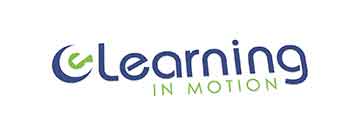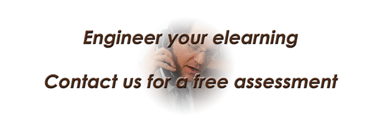eLearning has entered the training and instruction areas by supporting instruction through the use of Internet and technology. It is now really hard to find examples of instruction that does not use multimedia and other web-based technologies. Even machine learning and artificial intelligence are finding applications ins instruction. For example, medical students may find that their next standard patient is a robot somewhere in a server. But the student will feel as though the robot is actually a human with a condition that they need to diagnose.
But instructor-led training and instruction is not going away. Not all can be made available online in eLearning. But the role that the instructor plays in the training set or the classroom is changing in a very dramatic way. Instructors now are finding out the importance of verification that a student has gained a skill or acquired the required knowledge (the learning outcomes were fulfilled). It is not enough to show up and talk for hours and expect students to absorb all that knowledge that comes out of our mouth.
Learners now expect their instructors to use web-based tools and multimedia technology as part of the instruction. Students want to take more control of their learning, they want to explore the frontiers of their ignorance, this means the role of the instructor now has changed to that of a facilitator.
Additionally, every area of knowledge has accumulated so much content that it is basically impossible to cover the latest developments since much of the time is devoted to covering the basics needed for competency. An instructor now is going to gauge if a learner has acquired a skill or knowledge by using tools other than exams and quizzes.
But how can they do that in an effective way? I am offering three way in this post but I should let you know there are more tools you could use out there. These are:
- evaluations with designed questions
- observation of learner behavior and performance
- use of rubrics to evaluate written compositions
Data driven solutions require that the tools required to collect that data be designed with that in mind. Higher education and corporate training are moving into the area of statistical analysis to determine competency in a learner. This requires the design of targeted questions and prompts that can measure gained knowledge and change in behavior. Your quizzes and exams are not only for testing purposes, they are now the source of data for later analysis which will help improve the whole process.
Of course, evaluations by observation of performance or behavior has been used for a long time in training and education but now technology is helping evaluators. Performance might be affected by the presence of an evaluator during testing but they can make observations at a distance using live video streaming technologies such as eye movement detection, voice and face recognition software, and others.
Written compositions produced by learners can be a way to determine competency. Current technologies allow the detection of plagiarism or diminished originality of compositions. Text analysis can help determine the extent of vocabulary used by the learner, which is an indication of mastery of a field or knowledge. In order to maintain a minimum standard of grading and a consistency on the data produced, rubrics can be implemented with this in kind. This requires the careful design of elements in the rubric to ensure that the needed and correct data is collected during the evaluation.
Instructors now have many tools available to determine if a student has master a competency or if they can demonstrate the knowledge acquired during instruction. These tools need to be developed by a group of instructors and instructional designers, this will produce the best possible solution after many iterations of review and discussions among stakeholders. Do not attempt to do this alone, you should always look for help from other professionals and your peers or co-instructors.
I hope these recommendations help you set up some tools for your evaluations, or at least give you ideas on how to start on your system. As always, find us in social media. You can share this content by using the buttons below. If you have questions and comments, use the form at the bottom of this page, or contact me directly, and I will get back to you as soon as I can. Thank you for reading this post.

